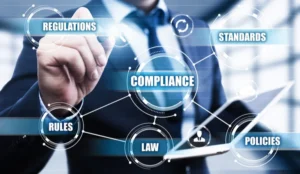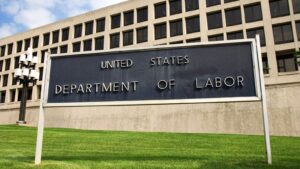As the COVID pandemic extends deeper into its second year, a national vaccine mandate has become a hot topic. While that kind of sweeping legislation will likely never come to pass, the Biden administration did make two significant moves last week to inch the nation closer.
Americans who have received at least one dose of a COVID-19 vaccine reached 62% this week. (Source: Our World in Data)
First, President Biden signed an executive order requiring all federal executive branch workers to get vaccinated. This requirement also extends to employees of contractors that do business with the federal government.
Biden also called upon:
- Mandatory vaccination requirements for workers employed by health care facilities that receive Medicare or Medicaid reimbursement.
- States to impose mandatory vaccination requirements for all public and private school employees.
- Entertainment venues to require proof of vaccination or testing for entry.
Second, the White House announced that the U.S. Department of Labor’s Occupational Safety and Health Administration (OSHA) is in the process of developing a rule implementing a new temporary emergency standard requiring all employers with more than 100 employees to:
- Ensure workforces are fully vaccinated against COVID-19, or…
- Require all unvaccinated workers to have a negative test result weekly before coming into work
- Provide paid time off for the time it takes workers to get vaccinated, or to recover from post-vaccination side effects
This action is seen by many as the logical next step in the Biden administration’s push to get American workers vaccinated, now that the FDA finally gave their full approval to Pfizer/BioNTech’s two-dose vaccine.
Job posts requiring vaccination jumped 90% between July and August. (Source: Indeed)
At this time, it is unsure how employers will be expected to accommodate employees who are unable to receive a vaccination, whether due to a medical condition or sincerely-held religious belief.
How should your business plan for a vaccine mandate?
While waiting for new information and clarification from the government, there are things businesses should do to prepare (if they haven’t already done so). Basically, make a plan to ensure compliance without implementing:
- Conduct a survey of employees to determine who is currently vaccinated.
- Discuss with relevant stakeholders whether a vaccine mandate or weekly testing of the unvaccinated makes more sense for the workforce.
- Make sure your screening and safety policies are up-to-date with current guidance from the CDC, OSHA, and state law requirements.
- Understand the process for medical and religious exemptions outlined in EEOC guidance.
- Consider the disruption and cost of an OSHA audit on your overall business.
What questions must still be answered?
Like most federal mandates when they are first announced, there are many questions that must be answered around qualifications, enforcement, and timelines. Here are some the most pressing questions we can expect to be answered in the coming weeks:
- When will the emergency temporary standard (ETS) be finalized?
- Which workers count toward the 100-employee threshold?
- How will the joint employment concept be considered?
- How long will employers have to comply with the mandate?
- Who will pay for required testing?
- Will the required testing count as paid work time?
Netchex will update this content as new information is made available. Please check back with us for more guidance.
Industry news & tips sent straight to your inbox!
Enter your email below to subscribe to industry news, product updates, and tips.
Related articles

Overtime Overruled: 2024 Overtime Rule Vacated, Reverts to 2019 Threshold

HR Rules + Legislation Updates: Overtime, Non-Compete, Joint Employer, and More

HR Legislation: 2024 Updates to Independent Contractors and Joint Employer Rules


